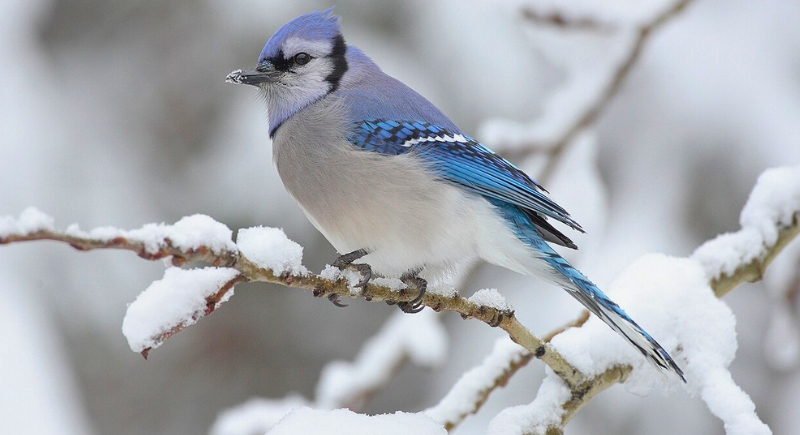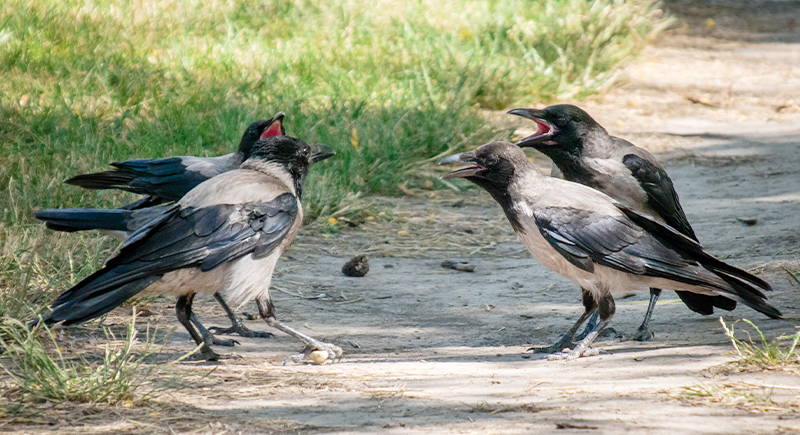The Bizarre “Funerals” Crows Hold When One of Their Own Dies
People often hear the phrase “murder of crows” and picture something eerie or straight out of a horror scene. The truth turns out to be far more unusual. In parks, parking lots, and ordinary neighborhoods, entire groups gather around a dead crow in a formation that looks almost ceremonial. It feels like a small outdoor service, yet scientists say the purpose is very different.
These gatherings help the birds learn, assess danger, and share information. Researchers now study this behavior under a formal name called corvid thanatology, which looks at how crows and related species respond to death.
The Bird Family Behind The Drama

Image via Wikimedia Commons/Mdf
Crows sit in the corvid family, alongside ravens, magpies, jays, rooks, and jackdaws. They count as songbirds, even though the classic “caw caw” will never end up in a choir. The songbird label ultimately comes down to the anatomy of the vocal organ, rather than how pleasing the sound is. Corvids share that structure with smaller birds such as sparrows and robins.
They also stand out in the intelligence department. Studies rank their problem-solving, tool use, and social skills in the same general league as many primates. New Caledonian crows, for example, shape hooks out of plant material and twigs to pull grubs out of wood, which is a level above simply grabbing a handy stick.
What Actually Happens At A Crow Funeral
A crow spots a dead member of its own species on the ground. The bird starts to produce harsh alarm calls and scolds that carry across the area. Those calls attract nearby crows, which arrive one after another and gather around the body in trees, on wires, or right on the ground.
The group, often called a mob, can stay noisy and keyed up for around 15 to 30 minutes. Some individuals hop closer for a better look. Others keep watch higher up. Then, almost suddenly, they quiet down and drift away, usually leaving only the local pair in the area. Researchers who timed many of these events in field experiments consistently saw the aforementioned window for the main action.
Death As A Safety Briefing, Not A Sad Vigil
In long field studies, scientists fed local pairs for several days, then staged “danger scenes” that included a human in a mask holding a taxidermy crow, sometimes with a nearby hawk perched above. The live birds often scolded loudly, attracted several more crows, then mobbed the scene in a pattern that lined up neatly with the usual “funeral” gatherings.
Crows in those neighborhoods remembered the masked faces that appeared with dead crows and treated those faces as a threat for weeks afterward. Even when a masked person later walked by empty-handed, the birds scolded and avoided feeding near that individual. That kind of long memory for a dangerous face after a single intense event shows how much learning sits inside these meetings around a body.
Inside The Crow Brain During These Gatherings

Image via iStockphoto/Oleh Trytiachenko
Researchers used FDG PET imaging to see what happens inside a crow’s brain during these unusual gatherings. They presented captive American crows with several cues, including a dead crow, a dead songbird, alarm calls connected to a dead crow, and food begging calls. Surprisingly, the sight of a dead crow did not activate brain regions linked to fear or social bonding. Instead, activity rose in the nidopallium caudolaterale, an area that functions much like the human prefrontal cortex and supports complex decision-making.
The same region responded to alarm calls and begging calls. This pattern points to one conclusion: crows approach death as an information puzzle. They appear to assess what happened, compare it with other signals, and change their behavior later based on what they learn, rather than reacting on instinct alone.
When The Funeral Gets Seriously Weird
A truly bizarre detail came out when scientists looked closely at the video and field notes. Out of many recorded events, a small slice, roughly four percent, included sexual behavior directed at dead crows. That could mean mounting the body, pelvic thrusting, or even a mated pair attempting to mate with each other and the corpse at the same time.
So yes, call it a “funeral” if you like, because it fits the vibe of a crowd circling a body and making a lot of noise. Just know that inside those small skulls, a lot more goes on than spooky atmosphere.